I am reading all of the books published by Biblioteca Adelphi, in order, from 1965-present. by @eva_barbarossa on tumblr, @theadelphiproject on IG
Don't wanna be here? Send us removal request.
Text
Insert curses here
I can still access this from my phone, but no where else, and tumblr won't help me. I keep the images and writing on my desktop, so I have mostly been angry that tumblr refuses to help, including ghosting my help requests and blocking me from submitting new requests. Powerless is powerless.
I miss creating this, so I've moved it elsewhere to continue on. I've been finishing a book on this, and there is so much additional material I wanted to add.
Please, if you enjoyed this, follow me anew at adelphiana.tumblr.com.
Thanks,
Eva
5 notes
·
View notes
Text
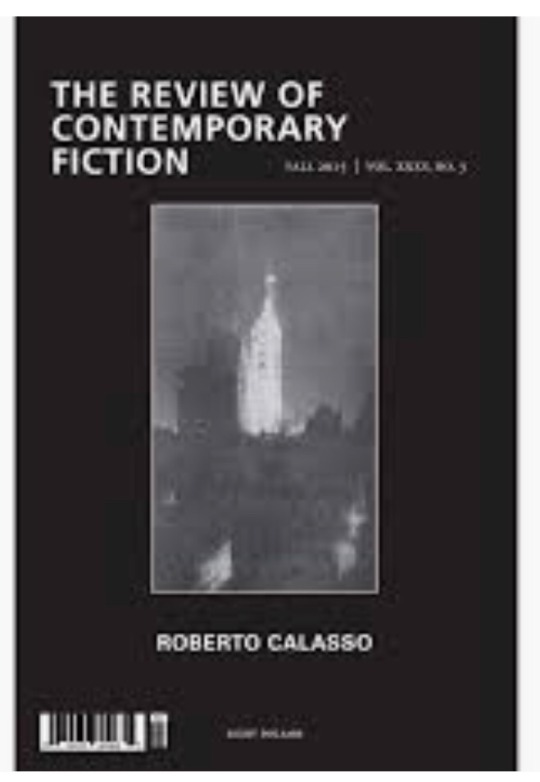
A piece by me is included in this collection! Nov, 2019.
6 notes
·
View notes
Text

Back to the American Academy in Rome for most of October. Then a week in Milan for some meetings. Looking forward to this, oh so much. The book I have been writing about this experience should be done soon as well. Extra-special times ahead.
5 notes
·
View notes
Text
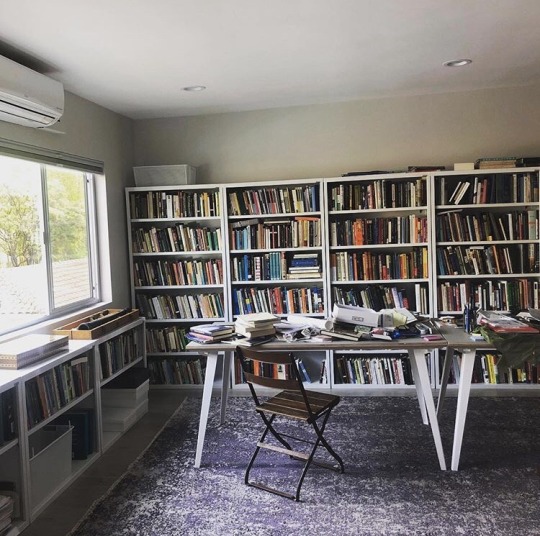
New studio space. More library than industrial building. Left shelves are the land of Adelphib
0 notes
Text

Last I returned from Milan, I was inspired to dress very properly for a party. Always a pleasure to see RC and listen to his ever thoughtful considerations on the world.
1 note
·
View note
Photo
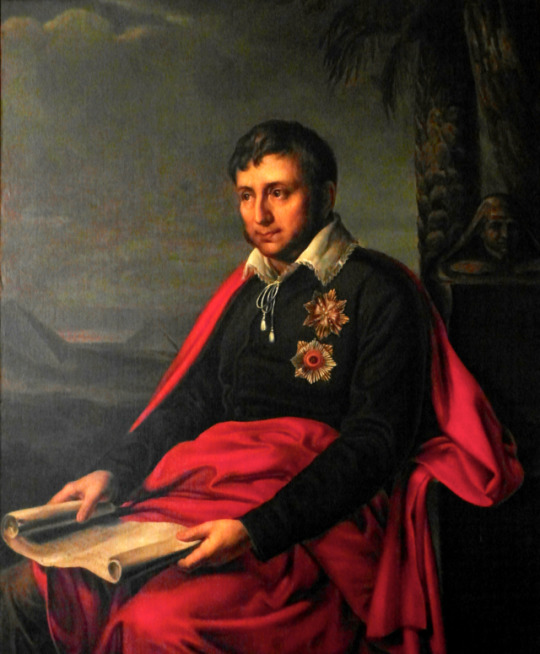
Manoscritto trovato a Saragozza / Manuscrit trouvé à Saragosse / The Manuscript Found in Saragossa | Written by Potocki (1761-1815) over decades, published by Biblioteca Adelphi in 1965.
Potocki was a Polish Count, adventurer, writer, army officer, educated in Switzerland, and the author of this one notable book. The book was printed in parts, written in more than one version, rumour has it that parts of the original were lost and were back-translated to French, from Polish. Potocki write in French, and due to his upbringing, despite being a Polish count, is also rumoured to have not been particularly fluent in Polish.
Stories of his life, and death, are a bit fantastical, which is suiting to this book he wrote. Some suggest he had advanced syphilis, some that he was just very odd. There are comparisons to tastes of the the Marquis de Sade, rumours of incest, and the story of his death is that he committed suicide after having a silver bullet made from the family teapot lid, blessed by a priest. Lupine delusions, and all that.
He had a Turkish valet with whom he was rather close, and a dog named Lulu. He was the first to balloon over Warsaw, with Blanchard, and insisted those two join them.
Painting by Alexander Varnek
1 note
·
View note
Photo
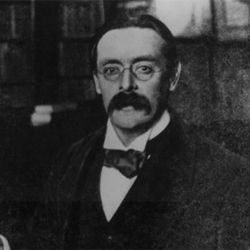
Edmund Gosse (Sir). Padre e Figlio: Studio di due temperamenti, publihsed by Biblioteca Adelphi, 1965/ Father and Son, first published anonymously, 1907
21 September 1849 - 16 May 1928. He was raised in a Protestant sect called the Plymouth Brethren, an Evangelical Christian sect (cult) which began in Ireland in the 1820s. As a sola scriptura group, Gosse’s father, a naturalist and a preacher, eventually had to choose between scripture and the naturalists of his time.
The father, Philip Henry Gosse, worked as a collector of specimens and wrote a great deal on natural history. Omphalos, which was his attempt to reconcile Lyell’s geological ages with the biblical account of creation, was seen as his son as a willful destruction of PHG’s own career. About this EG seems to have been unforgiving.
Like Kubin (Author Bio #1), his mother died while he was young. In Gosse’s case, she died, likely painfully, of breast cancer, when he was 8. He was shuttled off to boarding school after his father remarried.
Gosse was a librarian at the British Museum and ran with a literary crowd. Tennyson, Browning, Swinburne, Hardy, and Henry James were some of his compatriots. He later became the librarian a the House of Lords Library, where he stayed until retirement. He was loosely associated with the Pre-Raphaelite Brotherhood (about whom I would like to learn more.)
And, please note! He was the literary editor for the 1911 edition of the Encyclopedia Britannica. (I so wish I owned a copy, so I could go explore his contributions.)
His father’s inflexibility, a spiteful god, homosexual tendencies. An anonymously published book, the story of his liberation, of his will, and his desires, public and private. And what a mustache!
He was a writer of letters and there are collections of his correspondence with Andre Gide, John Addington Symonds, and Henry James, however most of the collections note that he wasn’t particularly important. His sole notable creation, in the opinions of people not me (who doesn’t know enough to say), is Father and Son.
2 notes
·
View notes
Photo

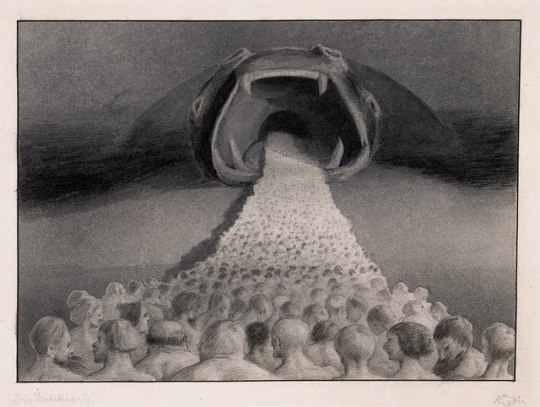
L'altra parte / Die andere Seite | Written by Kubin in 1908, published by Biblioteca Adelphi in 1965.
Kubin (1877-1959) was an Austrian illustrator whose works had Geiger-ish qualities to it, dark, macabre, bleak. He illustrated works for Poe and Dostoevsky, among others and was well known in his time. His social circle included Klee, Kandinksy and others of the Der Blaue Reiter group, of which he was a member.
He seems to have been generally unstable, described as frail and ill, as a baby, and then with the death of his mother and his early (10y.o.) attempts at suicide, odd interludes with women (also quite young, 11 or so, depending on what you read, and not his choice), it seems he was often a bit unhinged and rather lost.
Despite his success as an artist, his personal life seems rather forlorn, from early attempts at apprenticeships and direction, to the death of his wife ten days after their wedding, to the death of his father, after which he wrote,
“The true, inner nothingness of our existence was so deeply engraved upon my mind by this misfortune that probably no change of fate or later reflections will serve to alter it.”
The Other Side is the only book he wrote, he wrote it quickly in a period of despair and distraction. First released in 1908, in subsequent additions (starting in 1917) he added a biography to the back, and would update it with each release. Kubin writes of the time in which he wrote the book as a turning point in his spiritual development.
“During its composition I achieved the mature realization that it is not only in the bizarre, exalted, or comic moments of our existence that the highest values lie, but that the painful, the indifferent, and the incidental-commonplace contain these same mysteries.”
In 1917 he adds these lines:
“Then in August, 1914, the horror came. What artist, indeed, what man of any sort, would have dared to prophesy that there could still occur such a flood of hatred, rage, and obstinacy as now broke over us? It oppressed me in my lonely retret like the scent of carrion, and a dreadful persistent sadness and depression held me captive for the first four or five months of war.”
The novel itself is an allegorical fantasy about a Dream State, the city of Pearl, created by a schoolmate of the narrator. Visiting is at the request of the creator only, and comes with great stipulations – you must give up your life of before. The story is then one of insanity, the break down of self, the inability to know, and the loss of all that was understood. It is raw, visceral, sexual, and murderous and yet the characters lack the ability to realize their own choices and guide their lives. It is unclear if or when they truly have free will.
Kubin himself will say that he is not a writer, and the writing supports this. The tale itself is engaging, but the writing, not so much. Once he completed the possession that resulted in the novel, Kubin returned to his art, spending much of his later years secluded in a castle in upper Austria. Although he was classified as denegerate art by the Nazis, a great deal of his archives survived.
#kubin#the other side#austrian#illustrator#illustration#literature#the adelphi project#biblioteca adelphi
3 notes
·
View notes
Photo

A few years after this photo was taken, in1904, Kubin, an illustrator, had a break down of sorts and spent three months writing The Other Side in a state of delirium -- one the reader gets pulled into when reading the book. Photo by Nicola Perscheid.
0 notes
Photo

Reading Walcott's essays, so different than his poetry. Many cross overs of the authors though. His writings on Brodsky, Naipaul, others.
0 notes
Photo

A very young J. R. Ackerley. He appears twice in the list, with Hindoo Holiday and My Father and Myself. 1896-1967. British.
0 notes
Photo






My dream year for 2018. Which would require funding I do not have. So, dreams.
2 notes
·
View notes
Photo
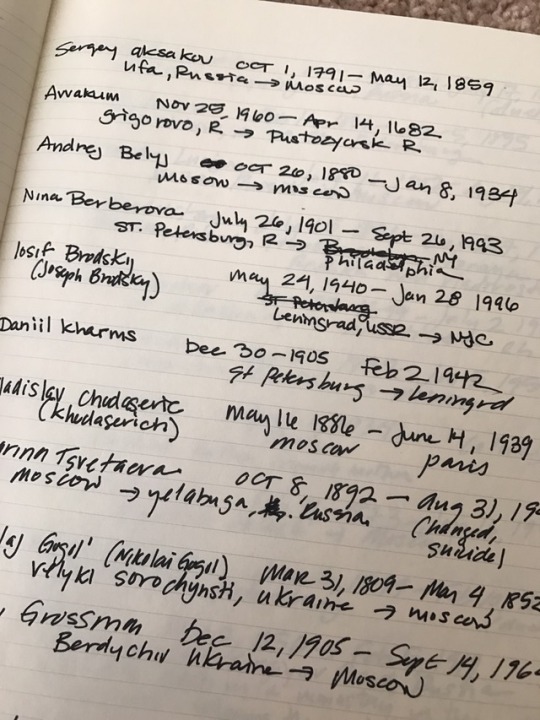
Data tracking starts in notebooks.
4 notes
·
View notes
Photo

Recapping 2017, or at least starting to wrap my head back around what has happened this year. This year’s reading started with the Russians, and thus this Russian wall in my flat, to help me see the structures, patterns, and relationships between the Adelphi authors, additional great Russian authors, and the historical events of Russia and the Soviet Union. 25 authors, many read in January and February in the dark hours before dawn, before work. I may have been a drearier consultant than usual, soaked through to the skin with these works.
2 notes
·
View notes
Photo

Cyril Connolly. I enjoy seeing the authors.
0 notes
Photo

Writing about things this morning. Considering angles.
1 note
·
View note
Photo

Today's book. (Reading it in English, invoking my original language rule, but the Adelphi covers are important.) #theadelphiproject
2 notes
·
View notes